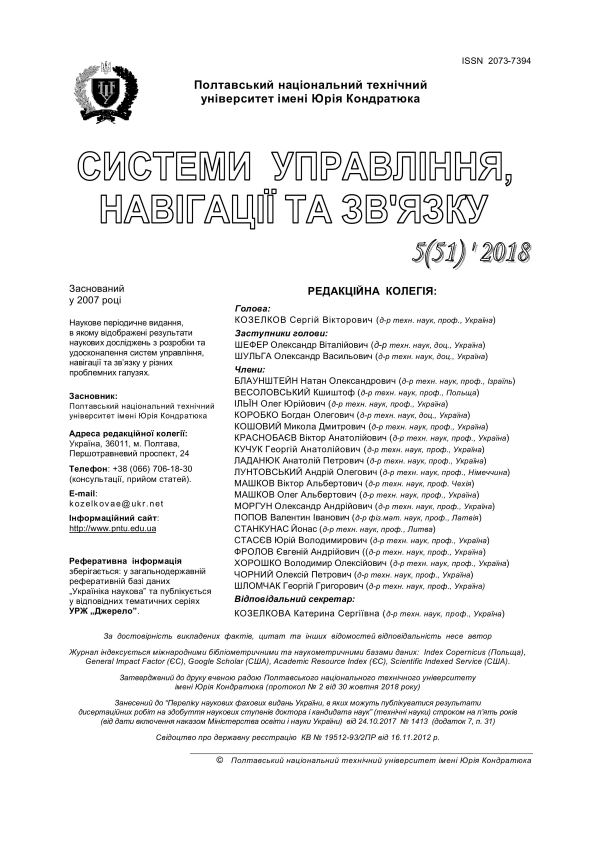DEVELOPMENT OF A FUZZY PRODUCTIVE RULES OF A FUZZY LOGICAL CLASSIFICATION SYSTEM OF AIR OBJECTS IN THE AIR SPACE CONTROL AND GENERALIZED ALGORITHM OF THEIR REALIZATION
DOI:
https://doi.org/10.26906/SUNZ.2018.5.033Keywords:
fuzzy production rule, classification of air objects, knowledge base, membership function, sign of an air objectAbstract
Airspace control requires the creation of a classification system for air objects. This problem is solved in a fuzzy setting. For this purpose, a base of fuzzy production rules and a generalized algorithm for their implementation have been developed. It is argued that traditional approaches to the development of rule bases are not sufficiently effective for the subject area under consideration. The purpose of the article is to develop a base of fuzzy production rules of a fuzzy logical system of classification of air objects. Analyzed approaches to the development of a base of fuzzy production rules of fuzzy logic classification systems. To classify an air object, its belonging to a predetermined class is established. Predefined classes are formally defined as a set. The elements of a set are classes defined automatically or set automatically. Identified the main features for the classification of air objects. The values of the signs are determined by the results of summarizing the trace information or are set by default. Character values are linguistic variables. In general, they are fuzzy numbers describing the terms of the corresponding linguistic variables. Structurally fuzzy production rules follow the rules of the 0th order fuzzy logical model of Sugeno. An example of using Sugeno 0-th order fuzzy inference based on the developed rules has been developed. The developed base of fuzzy production rules and a generalized algorithm for their implementation are the basis of the verification method for the software of a fuzzy logical system for classifying air objects in the process of monitoring airspace.Downloads
References
Mengshoel O. J., Delab S. Knowledge validation: principles and practice// IEEE Expert. - 1993. - 8. - P. 62 - 68.
Jahnke J., Schafer W., Zundorf A. Genetic fuzzy reasoning nets as a basis for reverse engineering relational database applications. - Germany, 1998.- 100 s.- http://www.unipaderbom.de/fachbereich/Schaefer/index engl.html.
Hasegama Т., Furuhashi Т., Uchikama Y. Stability analysis of fuzzy control systems based on Petri nets// Proc. Int. Discourse on Fuzzy Logic and the Management of Comflexity, FLAMOC'96. - 1996. - P. 191 - 195.
Polat F., Guvenir H. UVT: A unification-based tool for knowledge bast verification// IEEE Expert. - 1993. - 8. - P. 69 - 75.
Тимочко А.А. Представление динамических взаимодействующих процессов в пространстве состояний нечеткой раскрашенной сети Петри для верификации программного продукта нечеткой логической системы классификации / А.А. Тимочко // Наука і техніка Повітряних Сил. – Х. : ХНУПС, 2018. – №4(33). – С. 72-79.
Королюк Н.А. Формирование продукционных правил определения целесообразных параметров перехвата истребителями воздушных целей в условиях нестохастической неопределенности / Н.А. Королюк // Радіоелектронні і комп’ютерні системи. – Х.: НАУ «ХАІ», 2007. – №1(20). – С. 94-100.




